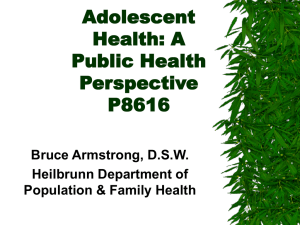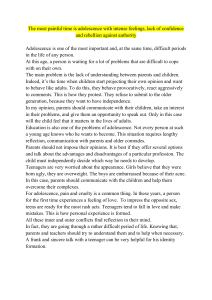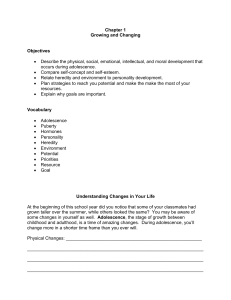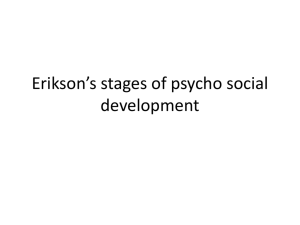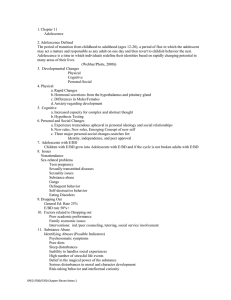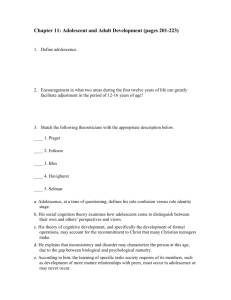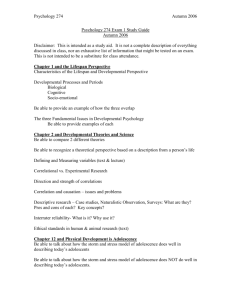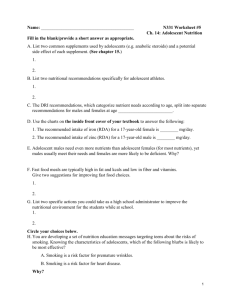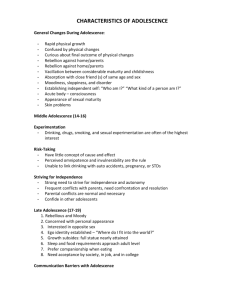Developmental Psychology Essay Questions
advertisement
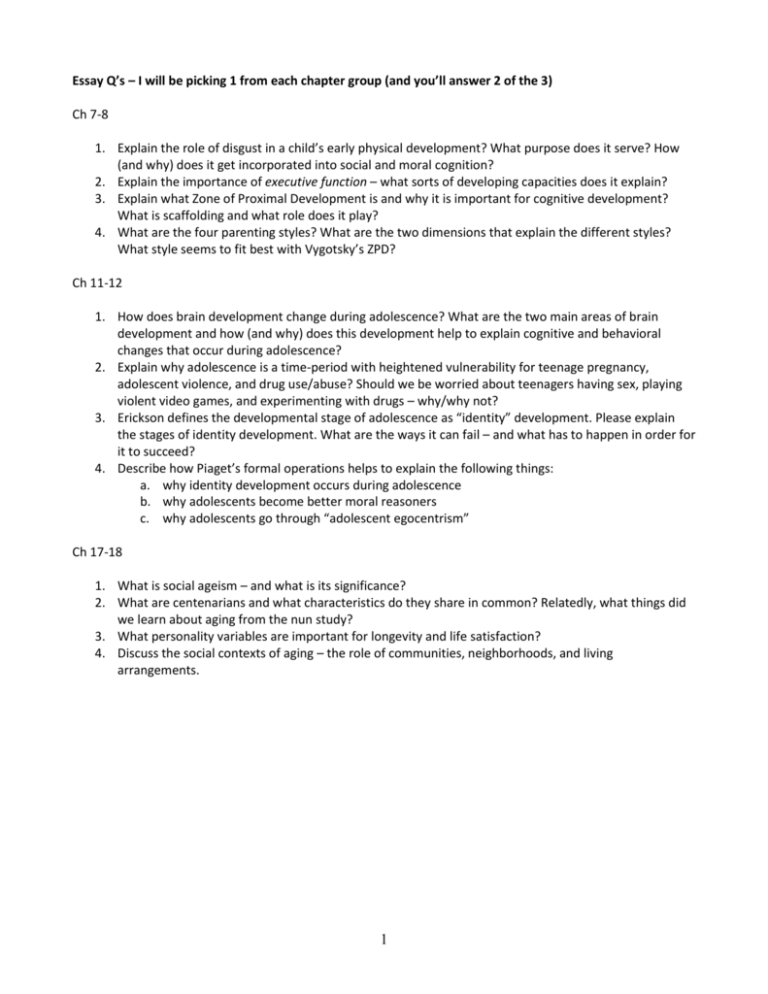
Essay Q’s – I will be picking 1 from each chapter group (and you’ll answer 2 of the 3) Ch 7-8 1. Explain the role of disgust in a child’s early physical development? What purpose does it serve? How (and why) does it get incorporated into social and moral cognition? 2. Explain the importance of executive function – what sorts of developing capacities does it explain? 3. Explain what Zone of Proximal Development is and why it is important for cognitive development? What is scaffolding and what role does it play? 4. What are the four parenting styles? What are the two dimensions that explain the different styles? What style seems to fit best with Vygotsky’s ZPD? Ch 11-12 1. How does brain development change during adolescence? What are the two main areas of brain development and how (and why) does this development help to explain cognitive and behavioral changes that occur during adolescence? 2. Explain why adolescence is a time-period with heightened vulnerability for teenage pregnancy, adolescent violence, and drug use/abuse? Should we be worried about teenagers having sex, playing violent video games, and experimenting with drugs – why/why not? 3. Erickson defines the developmental stage of adolescence as “identity” development. Please explain the stages of identity development. What are the ways it can fail – and what has to happen in order for it to succeed? 4. Describe how Piaget’s formal operations helps to explain the following things: a. why identity development occurs during adolescence b. why adolescents become better moral reasoners c. why adolescents go through “adolescent egocentrism” Ch 17-18 1. What is social ageism – and what is its significance? 2. What are centenarians and what characteristics do they share in common? Relatedly, what things did we learn about aging from the nun study? 3. What personality variables are important for longevity and life satisfaction? 4. Discuss the social contexts of aging – the role of communities, neighborhoods, and living arrangements. 1

